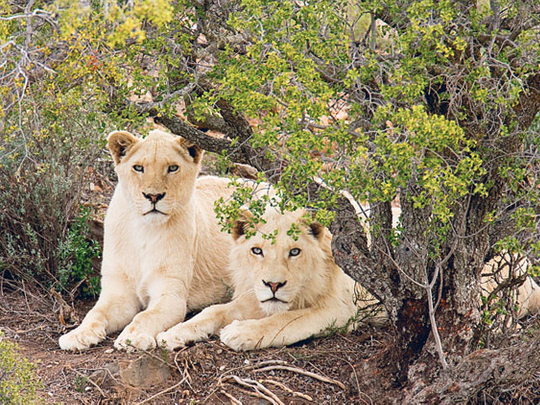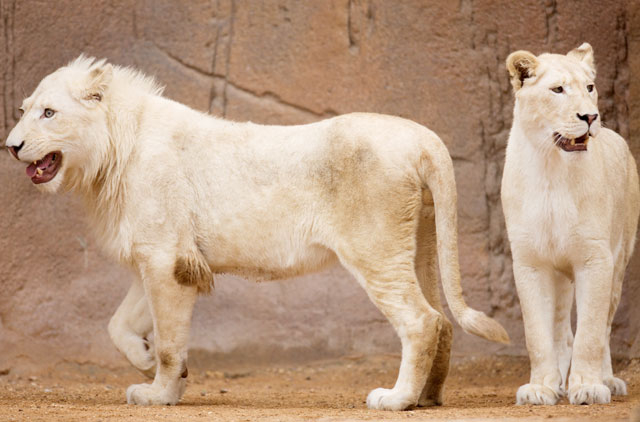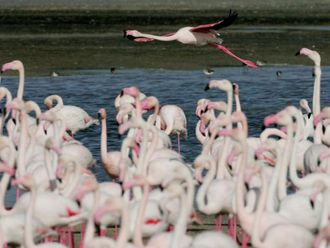
Al Ain: Al Ain Wildlife Park and Resort (AWPR) has recently taken in two extremely rare white lions, calling attention to the urgent need to protect the African lion from extinction.
The lions arrived from South Africa and have become familiar with their new surroundings. People can catch a glimpse of the magnificent creatures this week, a spokesperson for the AWPR said.
"The white lions at AWPR are not albino," he said. Their unique hair and skin pigmentation is caused by the presence of a recessive gene known as chinchilla or colour inhibitor. The eyes, paw pads and skin of the white lion retain a bluish hue. White lions were first documented in 1972 in the Kruger National Park of South Africa, though legend and folklore suggest the white lions have existed for many ages.
Fifty years ago, he said, the lion population exceeded 450,000, but today it has been reduced to only 20,000 lions living in the wild. They were found living from South Africa to the Atlas Mountains in north Africa, and from Mesopotamia to India. Hunting, shrinking habitat and attacks by herdsmen have confined the animals to the protected African wildlife reserves, he added.
Collapsing population
"Wild populations of African lions are collapsing and we're losing the African lion. We fear that wild lions will only survive in a few protected areas," said Dr Mike Maunder, chief conservation, collection, and education officer at the AWPR.
He said white lions at the AWPR would help highlight their plight in Africa, the loss of the lion in the rest of the world, and the need to conserve species and ecosystems.
The lions were transported, as a gift from the Sanbona Wildlife Reserve in Cape Town, South Africa, to the UAE by passenger aircraft in late November. The 18-month-old lions are brother and sister.
Farshid Mehrdadfar, the AWPR's animal collection manager, said: "The white lions at AWPR are ambassadors for their wild cousins."
He said the AWPR is trying to showcase the essence of the lion as a predator and a carnivore.












